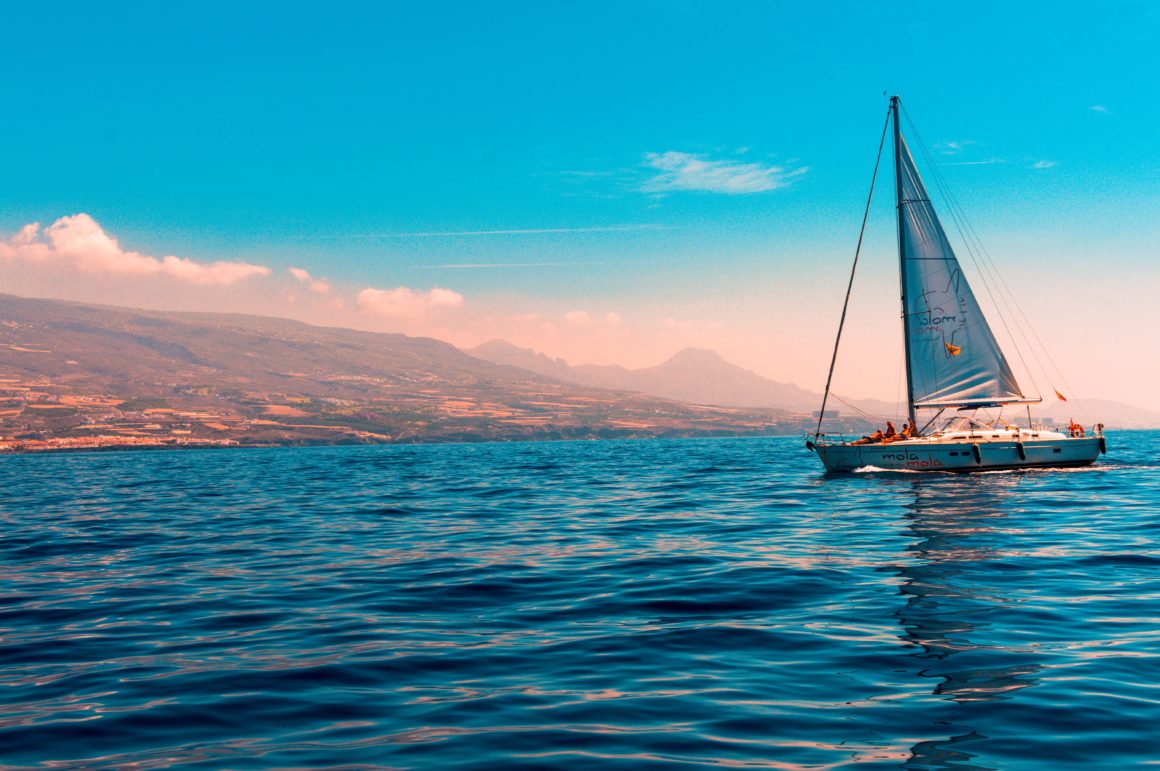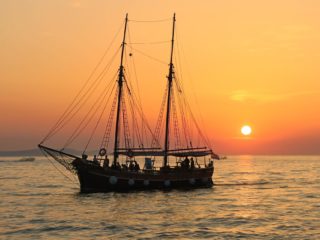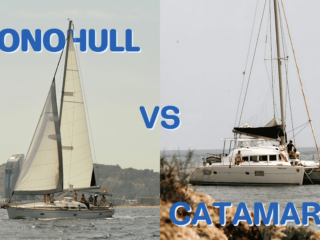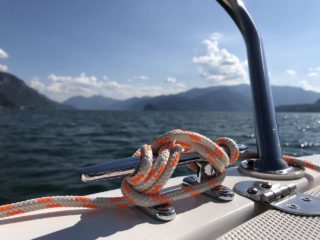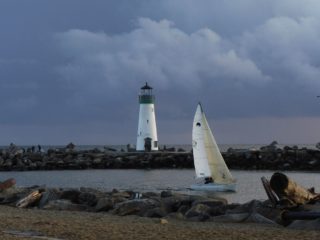Share the post "50 Essential Sailing Terms For Every Sailor"
What should every sailor know you ask? This blog will cover 50 sailing terms for every sailor that will have you in shipshape. From the different sections of a boat and types of vessels, to jargon used for navigation, this breakdown will help you understand your Click&Boat rental a bit better.
The Boating Basics:
These sailing terms should prepare you for full steam ahead!
- Aft – This refers to the general area in the direction of the back of the boat, i.e. the stern.
- Anchoring – To anchor your boat involves lowering a large, heavy object to the seabed. This will keep the vessel rooted to a particular place. Many modern yachts will also have built-in anchorage systems.
- Aweigh – When you prepare a vessel to leave the port, you use the term “anchor’s aweigh.” Sailors pull the anchor on deck and free the vessel, making it ready for departure.
- Berth – Can refer to the section of a seafaring vessel allocated to sleeping. It can also refer to the dedicated space in a dock in which the vessel can be moored.
- Boom – Refers to a horizontal spar and stretches from the aft of the mast.
- Bow – The bow is the first and foremost part of a ship.
- Deck – In a broad sense, a deck is the horizontal area that covers the hull of the vessel. This umbrella term can also refer to numerous storeys of a ship.
- Docking – Docking a ship consists in aligning your vessel parallel to a dock and securing it in place by fastening knots or roping lines to the dock/ pier/ quay.
- Fore – This is the general term for the front of the boat.
- Helm – This is where you get to live out your fantasy of being a captain – you’re finally at the helm! The helm is where you steer the boat, usually by a tiller or a wheel.
- Hull – The body of the boat.
- Keel – In its most basic form, this avoids the boat from “keeling over”! The keel is a structural membrane that runs from stem to stern and prevents the vessel from tipping over.
- Knot – When referring to currents and speed on the water, a knot is measured as 1 nautical mile per hour. Knots are also used to secure lines or bind objects on a vessel. You can learn some of the most common knots here for your next boating trip!
- Line – Refers to any type of rope onboard.

- Mast – A vertical pole that supports the main sail.
- Mooring – Refers to securing the vessel to a fixed object -pier, mooring buoy, dock, jetty – instead of dropping anchor wherever you please.
- Nautical Mile – Measures the distance travelled through the water and is equivalent to 1.852 kilometres.
- Port – Port is at the left-hand side if you are facing towards the bow.
- Rudder – Is a hinged blade fixed to the hull that is controlled by the tiller or wheel and moves the boat from side to side.
- Starboard – Starboard is at the right-hand side if you are facing towards the bow.
- Stern – The opposite of the bow and lies at the back of the boat.
- Wake – When the vessel slides through the surface, it will disturb the surrounding water, often resulting in V-shaped waves.
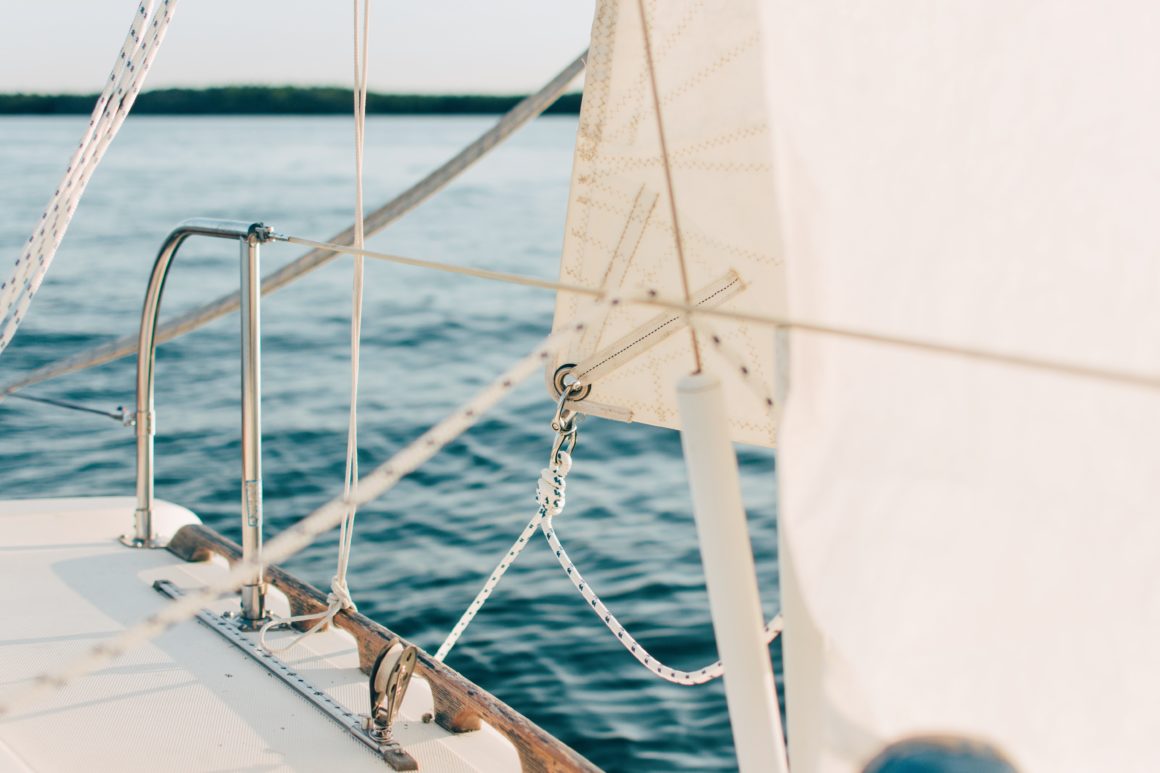
Which boat is which?
- Catamaran – The most distinct feature of a catamaran are the double hulls. You may recognise a catamaran by their shallow draft, increased living space and stability which combats seasickness perfectly!
- Yacht – The modern definition of yacht refers to all recreational boats, whether they be motor-powering or sailing. A mega yacht typically refers to a yacht with a length greater than 50 metres.
- Motorboat – An engine propels this type of boat.
- RIB – Otherwise known as Rigid Inflatable Boat, a RIB is a lightweight powerboat. You can travel securely in high speeds due to its hard hull and can rely on it for stability.
- Jet ski – A personal watercraft (PWC) which is propelled by inboard jet drives and is operated by the person who is standing, sitting or kneeling ON the vessel as opposed to other forms.
- Gulet – This traditional Turkish vessel is crafted from wood and is famed for its comfortable cruising.
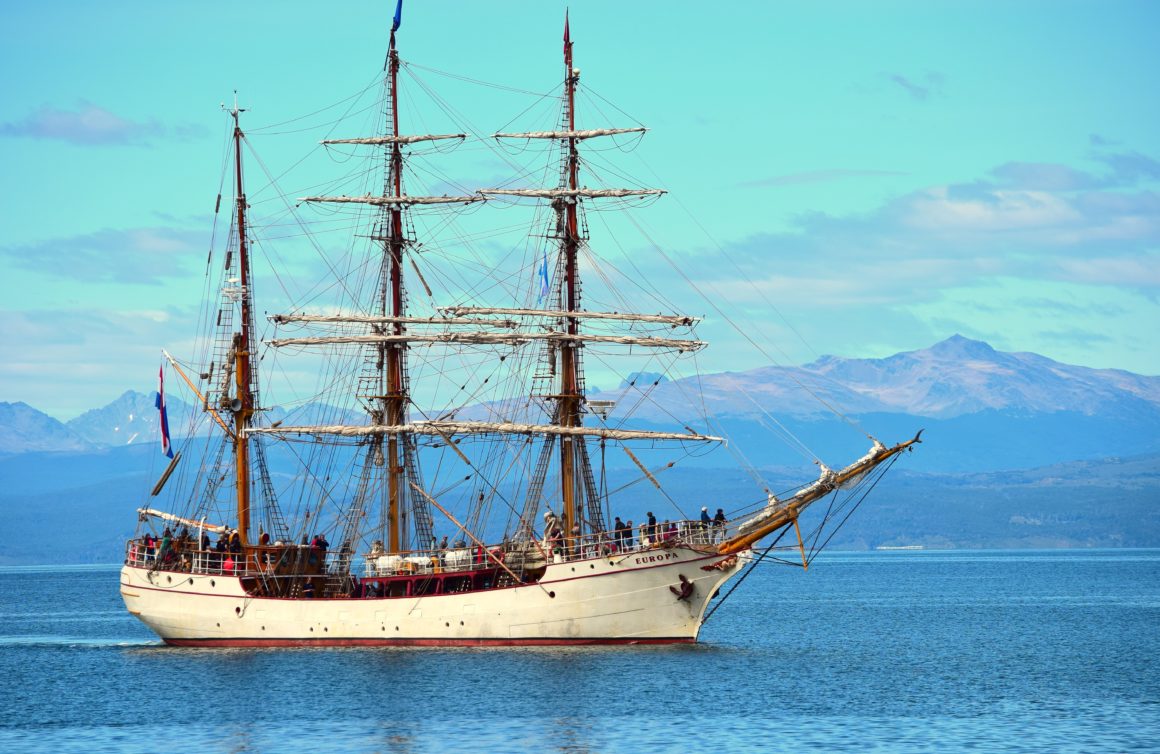
Sailing terms for Sails, Wind and Direction
- Apparent Wind Speed – Is the perceived speed and direction of the wind experienced by a non-stationary observer.
- Heeling – There’s nothing like this exhilarating feeling! The wind pushes the boat so that the mast is no longer perpendicular to the water.
- In irons – Means the boat is unable to manoeuvre and has stalled. If you steer the bow of the ship into the wind, the vessel cannot be controlled.
- Jibe or Gybing – A jibe is a sailing manoeuvre used to change direction in which the stern of the vessel is brought through the wind.
- Jib – You will find this sail position at the aft of the boat and can also call it headsail.
- Leeward – Describes the side of the boat which is furthest from the wind.
- Mainsail – Is the large sail that is the primary propulsion of the boat and erected in the middle of the boat.
- Point of Sail – Refers to the direction of the boat and angle of the sail in relation to the wind.
- Tack – In its verbal form, “tack” refers to altering the direction by turning the bow of the vessel through the wind. When used in noun format, tack also means the course you are following in relation to the wind.
- Trim the sails – Includes adjusting sails and orienting them optimally for conditions.
- True wind – Is the actual direction and speed of the wind that is blowing as experienced by a stationary observer.
- Windward – Describes the side of the boat that is closest to the wind.

Phrases that you didn’t know were sailing terms!
- Feeling blue – This commonly used term associated with melancholy has a nautical origin! The crew would hoist blue flags and paint a blue band along the hull. They expressed their grief for a captain lost at sea through this.
- Flotsam and Jetsam – Flotsam describes debris left behind unintentionally, such as due to a shipwreck. Jetsam encompasses items purposefully thrown overboard to lighten the ship’s load.
- Flying colours – Derives from victorious ships flying the “colours” or flags, to announce their triumph.
- Give a wide berth – Although sailors were provided with space to anchor their boats i.e. berth, they were often unsure how much sea room was exactly required to ride their anchor. Sailors gave each other a wide berth to avoid accidents and collisions.
- Like ships that pass in the night – Sailors travelled at night so as not to arouse suspicion, and passing ships did not acknowledge each other!
- Long shot – Making impact with a lengthy target was both highly lucky and unusual for sailors.
- Learn the ropes – New recruits had to learn how to tie knots, manoeuvre and control the sails to sail the boat effectively.
- Scraping the barrel – Was the literal act of scraping the bottom of a barrel to get every last morsel, meaning never letting anything go to waste and also that there was nothing left.
- Three sheets to the wind – Previously, if a sailor did not keep the sheets tight, this caused the sails to wobble and fly off course, looking drunk!
- Until the bitter end – Means to be at the very end of the anchor rope.
How many of these sailing terms were you already familiar with? Try out what you’ve learned on your next adventure with Click&Boat!

